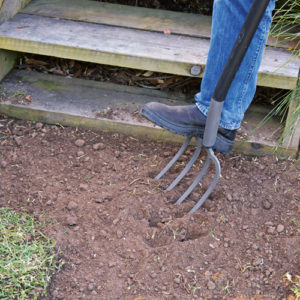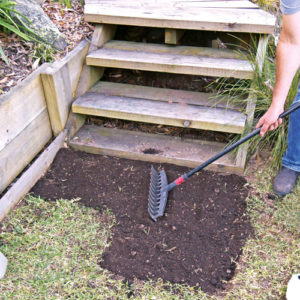Guide To Autumn Lawn Care

The weather we’ve had around the country this summer was very much a mixed bag.
Depending on where you live, your lawn may have been scorched bone-dry, limped on through cloudy, humid conditions, been underwater, or a combination of all three.
But no matter where you are or what your grass has suffered, it will need a little TLC to get it through the winter superbly, ready to bounce back and thrive next spring. Just an hour or two will see you set for the season.
Mow for health
How short you should cut your lawn is one of the most talked about and potentially confusing topics.
The standard advice for years was always to mow higher in summer but, in reality, you should aim to keep grass leaf blades as long as practical all year to maximise photosynthesis.
Apart from feeling so much better underfoot, longer grass will insulate the roots from temperature extremes, resulting in a healthier lawn all round.
If you normally mow your lawn in mulching mode, the cooler months are the times to switch to the catcher.
In warm weather, the finely cut grass clippings will quickly break down and add nutrients to the soil, but when it gets colder, decomposition slows.
If this mulched material sits on the lawn for too long, it will likely end up developing fungal problems.
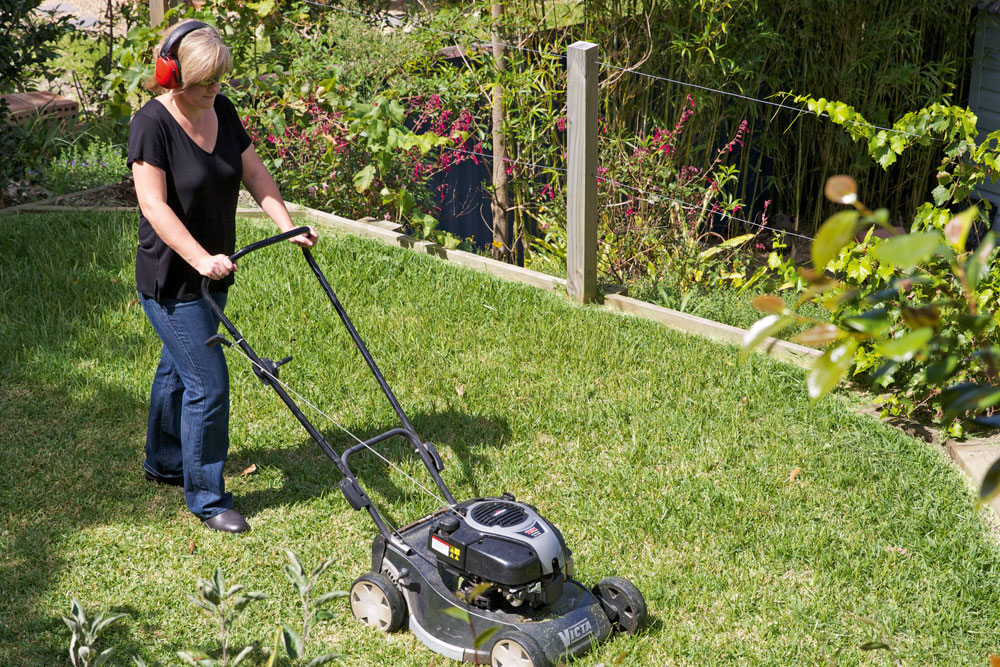
Fertiliser to prepare for winter
Not that long ago, feeding our lawns once summer was over was not recommended.
Now, thanks to new fertilising technology and a change in thinking about our lawn-care techniques, it’s considered almost essential to give it a good feed in autumn.
So why the change in thinking? A lot of the problems we attempt to remedy in spring stem from the lawn not doing well during the cooler months.
The solution is simple. Feed it the right way now and it will have the energy reserves and strength to tolerate shorter daylight hours and colder conditions.
Buffalo Pro is the ideal fertiliser to get the grass ready for the change in the weather, as it gradually releases nutrients for 12 weeks.
Your lawn will also be in a much stronger position to resist weed invasion if it’s still carrying plenty of foliage, and
will perform much better as a result.
Beat the weeds
No matter what the season, there is one simple way to kill weeds and that is to deprive them of enough space to establish and grow.
Weeds can get a firm hold in the cool months as grass goes patchy, so you need to keep your lawn as healthy as possible to avoid this happening.
This can be done by feeding, then using follow-up applications of a seaweed tonic, like hose-on Seasol, to help prevent any damage from the colder conditions and frost.
Many grassy areas suffer from the perennial and frustrating problem of bindiis in the summer.
Believe it or not, now is the best time to be treating them, as the young plants are just developing.
If you wait until spring, the chances are the plants will have started making their seeds, the foot-stabbing prickly bits, so it’s probably too late by then.
Look closely at your lawn. See that harmless-looking soft green weed? That’s a bindii plant starting to grow.
In a month or two, it will begin to flower and be on the way to developing those dreaded prickles.
Talk with an expert at your local nursery about the right type of treatment for your lawn.
Many weeds can be manually removed, avoiding unnecessary chemical use, but only do so after rain or watering, as the soil is looser and the weeds will come away more easily, roots and all.
Hand weeding doesn’t always need to be a painful chore. A long-handled weed puller takes the bending and hard work out of the job.
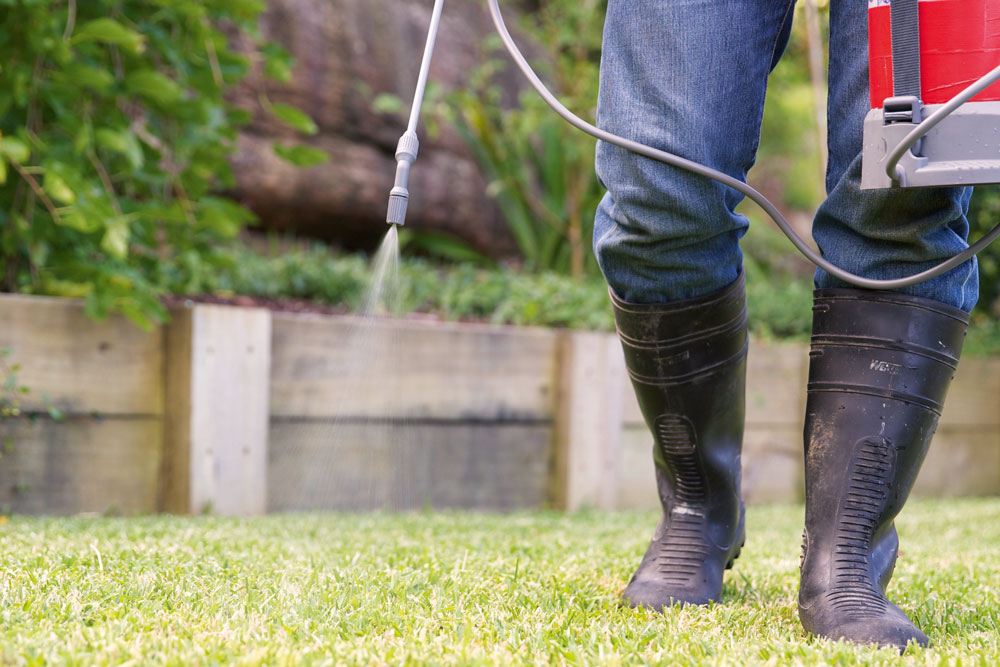
Treat bindis now to have a prickle-free lawn in summer
Watering when needed
Perhaps the most difficult call to make as the days grow shorter and the weather cools down is how much and how often you should water.
If conditions remain dry, then water as often you need to. Your lawn will usually tell you when it wants a drink, as the grass blades will look less lustrous when they are feeling drought-stressed.
When you do water, just as in summer, do it in the morning to avoid grass sitting wet overnight.
You’re more likely to end up with fungal disorders if it remains wet on long, cool nights. And as you’ll likely lose less to evaporation, you can cut down the amount of water you use by at least 25%.
If you’re having trouble getting water into your lawn, regular applications of a product like Eco-hydrate will improve penetration and help rejuvenate drier soil.
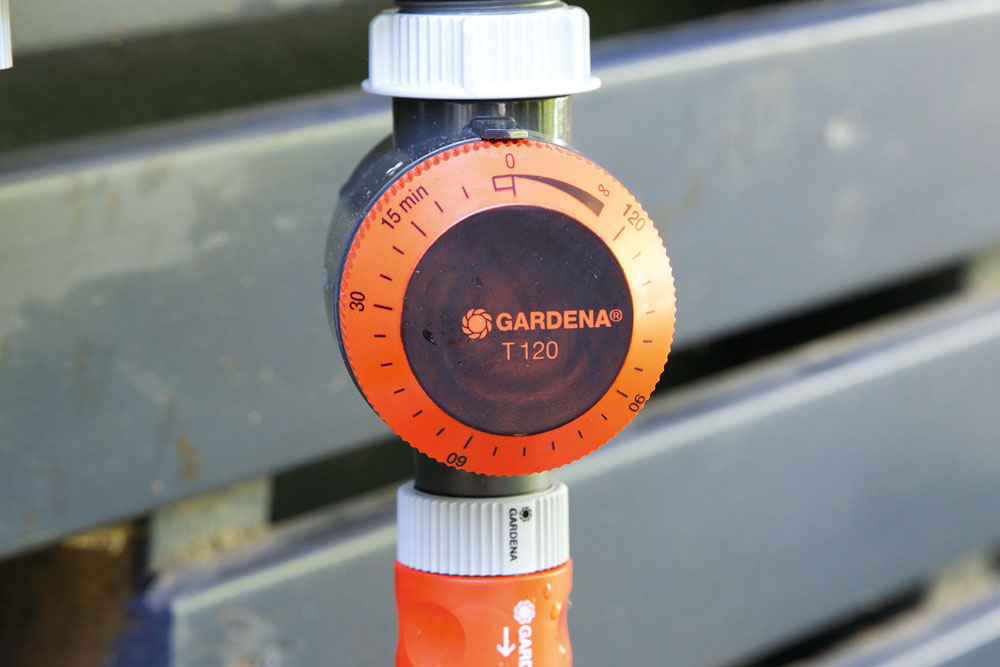
A simple two-hour tap timer helps you water just the right amount
Let in light
Keep your lawn leaf-free over the autumn months to ensure the sun can reach it as much as possible.
Your grass, like all plants, lives and grows by converting light into energy.
Less sunlight means less energy and less growth, which will be followed by patches and weeds.
Autumn is often a time of great leaf fall, so it’s important that you regularly rake your lawn to remove any leaves that may be shielding the grass from those all-important rays of sunshine.
Check to see if any plants in surrounding garden beds have also begun to shade out areas of lawn after their warm-season growth.
If so, give them an appropriate haircut using a power trimmer to ensure you get a large amount of light covering the grass.
Watch the shadows in your garden and also trim any overhanging branches to further maximise the areas open to the sun.
To ensure that keeping the grass leaf-free is a breeze, use a cordless blower vac to make easy work of tidying up your garden greenery.
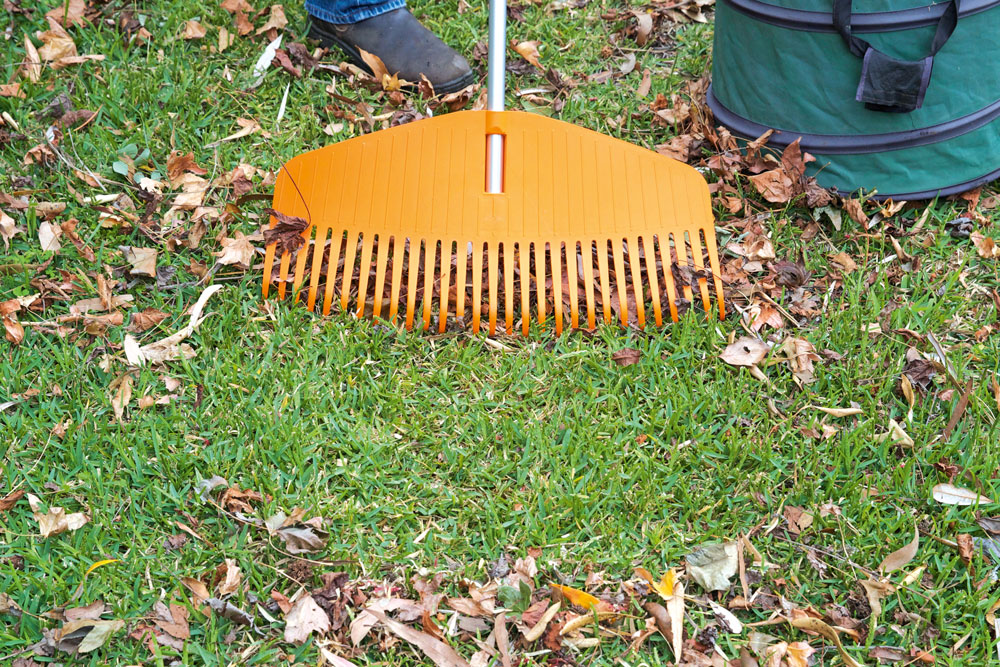
Rake away leaves in autumn so the lawn gets enough light
Repair and patch
If your lawn is suffering following a summer of weather extremes, dogs, and kids, then now is really your last chance to fix those bald patches before the winter arrives.
With the soil still warm and the days reasonably long, it’s a great time to repair these areas with seed or turf rolls. Or over-sow with a suitable seed if the grass is looking thin all over.
Hortico Lawn Repair is a blend of fast-to-establish and drought-tolerant lawn seed mixed with slow-release lawn food.
It’s the super easy way to repair dead patches or over-sow thinner areas.
Lay new turf
